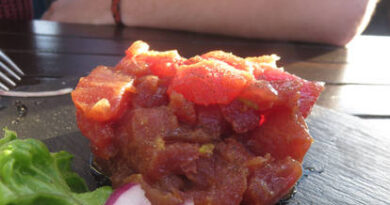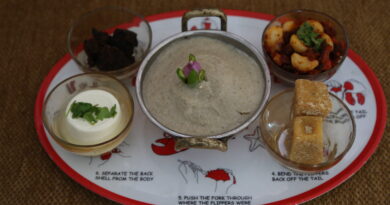Souttert
Souttert: A Culinary Journey into South African Comfort Food
Introduction
Nestled within the rich tapestry of South African cuisine is a dish that captures the essence of comfort and tradition: Souttert. Also known as South African quiche or savory tart, souttert has become a staple on dinner tables across the country. In this blog article, we will embark on a culinary journey to explore the history, cultural significance, and various recipes of souttert, celebrating the flavors that make it a beloved dish.
I. The Origins of Souttert
Souttert, a term derived from Afrikaans, roughly translates to “sour cake” in English. While the name might suggest a tart or pie with a sour taste, it is more accurately a reflection of the historical use of sourdough in the early versions of this dish. With roots dating back to the Dutch and French influences on South African cuisine, souttert has evolved over the years to incorporate a diverse range of flavors and ingredients.
The dish is reminiscent of quiche but has distinct South African twists, reflecting the fusion of culinary traditions that have shaped the country’s food landscape. Souttert has become a cherished part of South African gatherings, from family dinners to festive occasions.
II. Cultural Significance of Souttert
- Family and Community Gatherings Souttert holds a special place in South African homes, often gracing the table during family gatherings, celebrations, and community events. Its versatility makes it suitable for a variety of occasions, from casual brunches to more formal dinners.
- Heritage and Tradition The dish is a testament to the cultural diversity of South Africa, with each family infusing their unique flavors and ingredients into their souttert recipes. It has become a way for people to connect with their heritage and share their culinary traditions with future generations.
III. Key Ingredients of Souttert
While there are numerous variations of souttert, the basic ingredients typically include:
- Pastry Dough: The foundation of souttert is a buttery and flaky pastry crust. Some recipes call for a traditional shortcrust pastry, while others may use puff pastry for added layers of texture.
- Eggs: Eggs serve as the binding agent in souttert, providing structure and richness to the filling.
- Milk or Cream: A creamy base, often a mixture of milk and cream, contributes to the luscious texture of the filling.
- Meat: Souttert commonly features meat as a key ingredient. Bacon, sausage, minced beef, or leftover roasted meats can be used to add savory depth.
- Vegetables: A variety of vegetables can be included, such as onions, bell peppers, spinach, or mushrooms, enhancing the nutritional profile and flavor complexity.
- Cheese: Cheese is a quintessential element in souttert, providing a gooey, melty texture. Cheddar, Gouda, or feta are popular choices.
- Seasonings: Herbs and spices like thyme, rosemary, black pepper, and nutmeg contribute to the overall flavor profile.
IV. Classic Souttert Recipe
Here’s a classic souttert recipe to get you started:
Ingredients:
- 1 sheet of puff pastry
- 200g bacon, diced
- 1 onion, finely chopped
- 1 cup mixed vegetables (bell peppers, spinach, mushrooms), chopped
- 4 large eggs
- 1 cup milk
- 1 cup grated cheddar cheese
- Salt and pepper to taste
- Fresh herbs (thyme or parsley) for garnish
Instructions:
- Preheat the oven to 375°F (190°C).
- Roll out the puff pastry and line a greased tart or quiche pan.
- In a pan, cook the diced bacon until crispy. Remove excess fat, add onions, and sauté until translucent.
- Add mixed vegetables to the pan and cook until softened.
- In a bowl, whisk together eggs and milk. Season with salt and pepper.
- Spread the bacon and vegetable mixture evenly over the pastry crust.
- Pour the egg and milk mixture over the filling.
- Sprinkle grated cheese on top.
- Bake in the preheated oven for 30-35 minutes or until the filling is set and the pastry is golden brown.
- Allow the souttert to cool slightly before slicing. Garnish with fresh herbs and serve.
V. Variations of Souttert
- Bobotie Souttert: Infused with the flavors of traditional bobotie, this variation includes minced meat seasoned with curry spices and topped with an egg-based custard.
- Vegetarian Souttert: For a meat-free option, load the tart with a variety of vegetables, such as butternut squash, zucchini, and cherry tomatoes. Enhance the flavor with a mix of herbs and cheeses.
- Spinach and Feta Souttert: A classic combination, this variation features sautéed spinach and crumbled feta cheese, creating a delightful savory tart with a Mediterranean twist.
VI. Tips for Perfect Souttert
- Prebake the Pastry: Blind bake the pastry crust for a few minutes before adding the filling. This ensures a crisp base and prevents a soggy bottom.
- Balancing Flavors: Experiment with the balance of ingredients to achieve the perfect harmony of flavors. Adjust the quantity of meat, vegetables, and seasonings based on personal preferences.
- Creative Additions: Feel free to get creative with additions like caramelized onions, sun-dried tomatoes, or a drizzle of balsamic glaze for an extra layer of flavor.
- Serve with Accompaniments: Souttert pairs well with a variety of accompaniments, such as a crisp green salad, chutney, or a dollop of sour cream.
Conclusion
Souttert, with its roots deeply embedded in South African history and culture, stands as a testament to the diverse and flavorful nature of the country’s cuisine. Whether enjoyed at a family gathering, a festive celebration, or a casual brunch, souttert is a dish that brings people together through its comforting and delicious appeal. So, embrace the culinary traditions of South Africa and embark on a savory journey with souttert, savoring each bite of this delightful and heartwarming creation.



